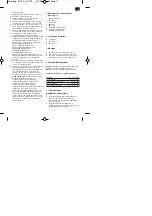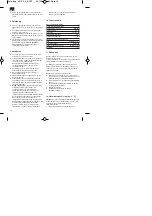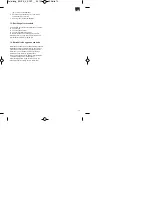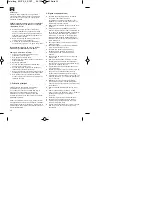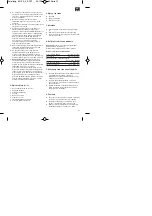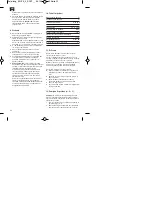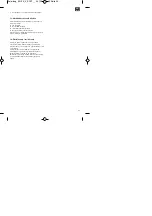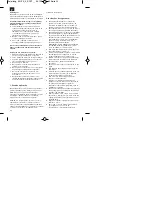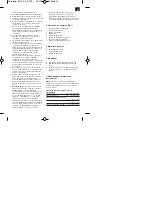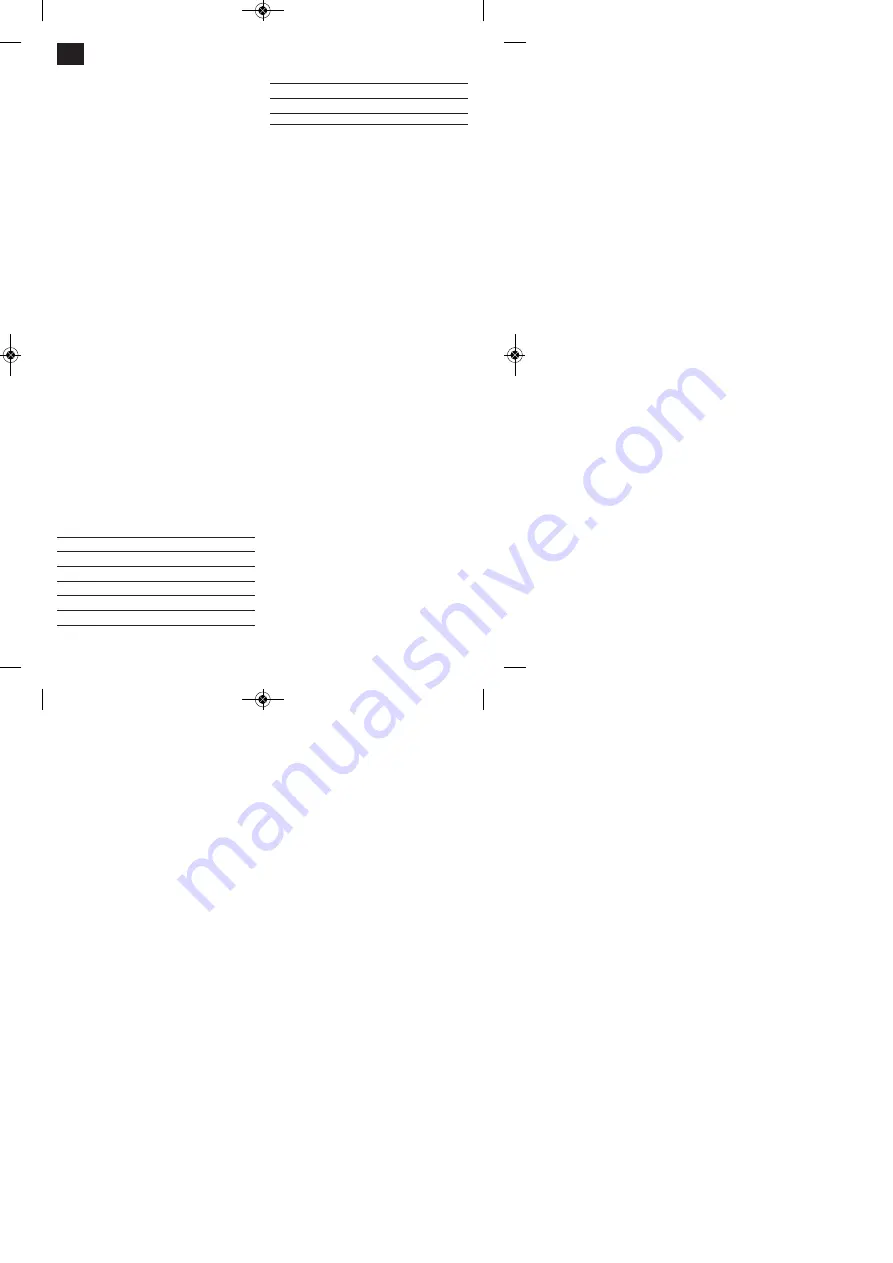
10
far it will go and screw in the pump (clockwise)
until it is tight again. The pump handle will
engage in the bayonet lock.
Note:
The bayonet
lock must be properly latched whenever you
transport the pressure sprayer.
9. Spraying
앬
Release the pump handle from the bayonet lock
by turning it counter-clockwise slightly.
앬
Pressure is built up in the tank by pumping the
pump handle (up and down).
The maximum tank pressure (operating
pressure) must not exceed 2.5 bar. The pressure
valve trips at a pressure of 2.7 bar and releases
any pressure above this level.
앬
To spray, press the trigger (Fig. 1/3) on the spray
gun handle.
앬
The spray jet will stop immediately you let go of
the trigger.
앬
After use, clean the unit and leave it open to dry.
앬
The service life of the unit will be increased
dramatically if you lubricate the sealing rings and
sleeves with resin and acid-free grease
(Vaseline).
앬
Important note:
Heavy stresses caused by the
way in which it is used (including transport to the
place of use and storage during non-use),
ambient influences (at the place of use and the
storage place when it is not in use), poor
maintenance and care may cause the unit to
suffer premature wear. You should therefore
check that it is in safe and working order, but at
least for obvious signs of damage before use.An
expert, ideally a service outlet should check
whether the unit is still safe to use, particularly
after any faults have occurred that may
adversely affect its safety but at least every five
years.
10. Technical data
Max. filling capacity
5 l
Total filling capacity
6 l
Volumetric flow rate, Vmax =
0.65 liters/min.
Permissible operating pressure
2.5 bar
Optimal spray pressure
1.5 - 2.5 bar
Optimal spray distance
0.6 m
Permissible operating temperature
+ 40°C
Safety valve / vent valve
1
Nozzle
hollow cone 1.1 mm
Nozzle spraying angle
max. 60°
Repulsion angle at the nozzle
less than 5N
Net weight
1.0 kg
11. Cleaning
After use, clean the unit and leave the sprayer tank
open to dry. Note the cleaning instructions in the
directions for use that came with the chemical in
addition to these cleaning instructions.
Remove any remaining liquid from the tank through
the tankʼs filler opening and store the liquid properly
for subsequent use or dispose of it in accordance
with the applicable regulations.
Perform the following steps to clean the pressure
sprayer:
앬
After the tank has been sprayed empty or after
completely emptying the tank as previously
described, fill the tank with clear water to a level
that amounts to ten times the residual liquid.
앬
Close the tank and forcefully shake the pressure
sprayer several times.
앬
Now spray the contents of the pressure sprayer
on the area you just treated or on an area that
you reserved for this purpose.
앬
Repeat the cleaning process.
앬
The tank can now be drained through the filler
opening.
12. Replacing the O-ring (Fig. 3 – 5)
Important:
Before carrying out any maintenance on
the unit, always release the pressure by simply
pulling up on the funnel-shaped knob on the safety
valve (Fig. 1/6).
1.
Remove the pump insert from the pump casing
using a screwdriver (Fig. 3).
2.
Replace the defective O-ring (A) and lubricate it
with acid-free grease (e.g. Vaseline).
3.
Assemble in reverse order.
GB
Anleitung_BG-PS_5_SPK7__ 03.12.13 13:42 Seite 10
Summary of Contents for BG-PS 5
Page 2: ...2 1 2 1 1 2 7 6 5 8 2 4 3 Anleitung_BG PS_5_SPK7__ 03 12 13 13 42 Seite 2 ...
Page 3: ...3 3 5 6 4 1 2 A 1 3 5 7 2 4 6 8 Anleitung_BG PS_5_SPK7__ 03 12 13 13 42 Seite 3 ...
Page 38: ...38 Anleitung_BG PS_5_SPK7__ 03 12 13 13 42 Seite 38 ...
Page 39: ...39 Anleitung_BG PS_5_SPK7__ 03 12 13 13 42 Seite 39 ...

















